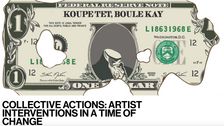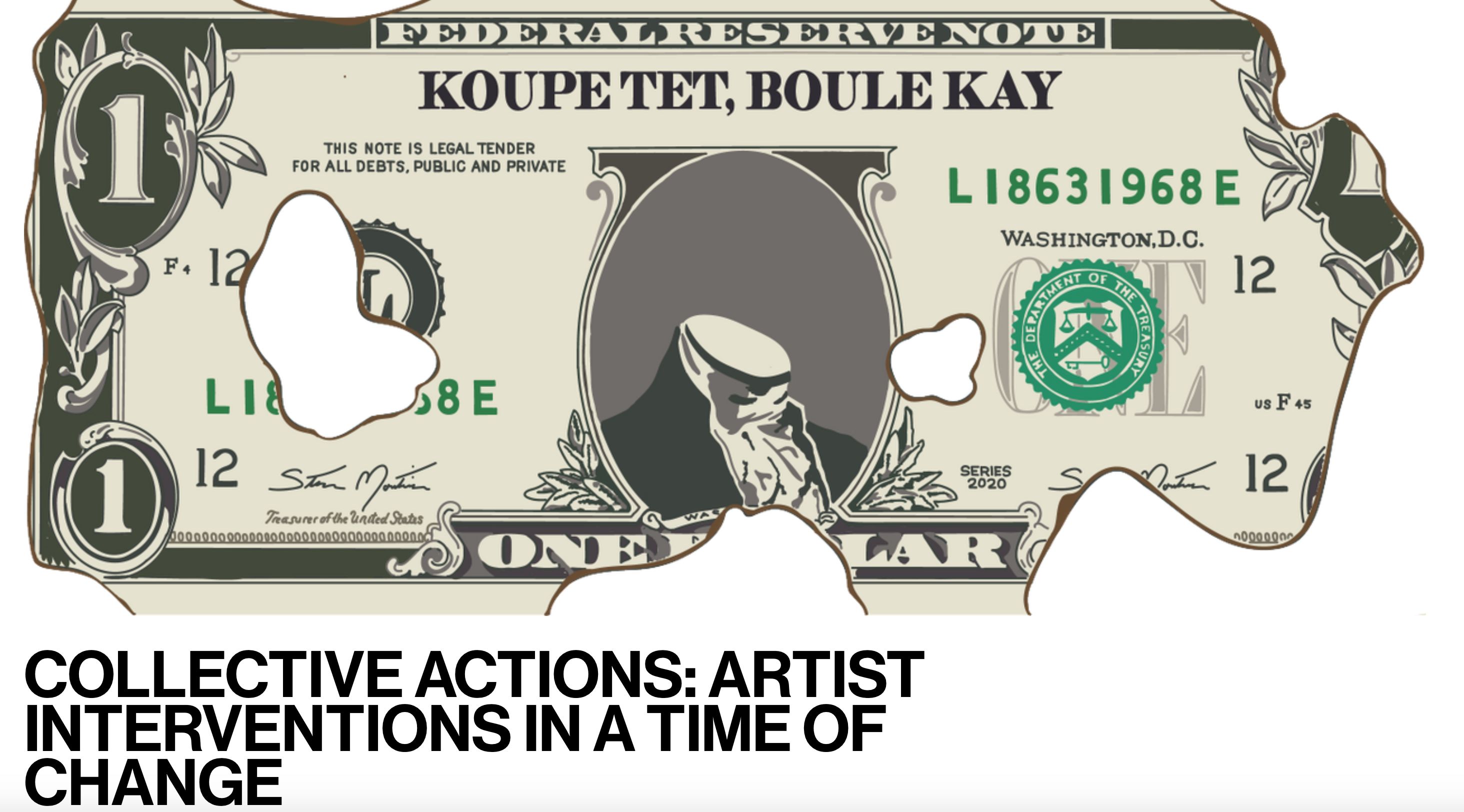[ad_1]

UPDATE: 4:45 p.m. — In a statement to HuffPost, curator Farris Wahbeh said that the Whitney has “been listening and hearing from artists about their concerns” and has decided to not hold the exhibit.
“We apologize for the anger and frustration the exhibition has caused and have made the decision not to proceed with the show,” Wahbeh said. “The works in the exhibition were collected as part of the Whitney’s Special Collections, an area that houses artists books, zines, posters, prints, and objects that document how artists distribute published materials as a form of practice, both physically and on-line, and are collected as the materials are launched and circulated.
My sincere hope in collecting them was to build on a historical record of how artists directly engage the important issues of their time. Going forward, we will study and consider further how we can better collect and exhibit artworks and related material that are made and distributed through these channels. I understand how projects in the past several months have a special resonance and I sincerely want to extend my apologies for any pain that the exhibition has caused.”
The Whitney Museum of American Art was lambasted on social media this week and accused of “exploiting” Black artists after it bought multiple works from a fundraiser and adding them to an exhibition without direct permission from the artists themselves.
Photographer Gioncarlo Valentine shared a screenshot on Twitter of an email he received Monday from the Manhattan museum. The email explained that the Whitney had acquired his work from the See In Black collective and would be displaying it as part of their upcoming “Collective Actions: Artist Interventions in a Time of Change” exhibition, which is slated to run from Sept. 17, 2020 to Jan. 3, 2021.
The email from the Whitney said that in “recognition and appreciation” of his work being included, Valentine would receive a “Lifetime Pass” to the museum.
In subsequent tweets, Valentine said that his work was purchased at “horrendously discounted prices” and “outside of the art buying context.”
Valentine had initially donated the work in question to See In Black, “a collective of Black photographers who uplift and invest in Black visibility.”
The collective aims to sell “highly-curated prints from Black photographers” in an effort to “raise funds that support five key pillars of Black advancement: civil rights, education/arts, intersectionality, community building, and criminal justice reform.” Money raised by See In Black goes to organizations like Know Your Rights Camp, Youth Empowerment Project, National Black Justice Coalition, Black Futures Lab and The Bail Project.
On the exhibition website, the Whitney says that “the majority of the works … were initiated by artist collectives.” The museum also states that the exhibition’s goal is to showcase “the critical role of artists in documenting moments of seismic change and protest” and the work “created this year in response to the COVID-19 pandemic and the Black Lives Matter movement.”
In a statement on Twitter, See In Black indicated that it had been unaware that the museum was purchasing the art for sale in the fundraiser. The collective said: “The Whitney’s use of the works acquired through the See In Black print sale at significantly discounted prices ― the proceeds of which were donated 100% to charity ― constitutes unauthorized use of the works to which the artists do not consent and for which the artists were not compensated.
“We stand behind the photographers who participated in our charitable initiative and will continue to prioritize their interests in this matter,” it concluded.
Visual narrator and photographer Texas Isaiah, whose work was also acquired by the Whitney through See In Black, told HuffPost that the museum bought his art for $100.
“It’s bewildering to think that a multi-million dollar museum went around to buy works for $100, some unsigned, untitled and not dated for their collections. It is predatory, condescending and irresponsible,” he said. “The Whitney is a major institution, and I understand why it can be a little intimidating to speak up. However, if they managed to acquire the works in this manner, they do not deserve them at all.”
Considering that See In Black’s mission is to “replenish those we’ve been nourished by,” many critics and fellow artists have been quick to remark on the Whitney’s acquisition of the art through an organization meant to enrich the Black community, as opposed to dealing directly with the artists themselves.
Though it has not released its budget for the “Collective Actions” exhibition, the Whitney projected a revenue shortfall of at least $7 million by the end of this fiscal year, and has laid off 76 staff members due to the impact of the coronavirus pandemic. It is slated to reopen to the public on September 3.
Representatives for the museum did not respond to HuffPost’s request for comment.
Calling all HuffPost superfans!
Sign up for membership to become a founding member and help shape HuffPost’s next chapter
[ad_2]
Source link

